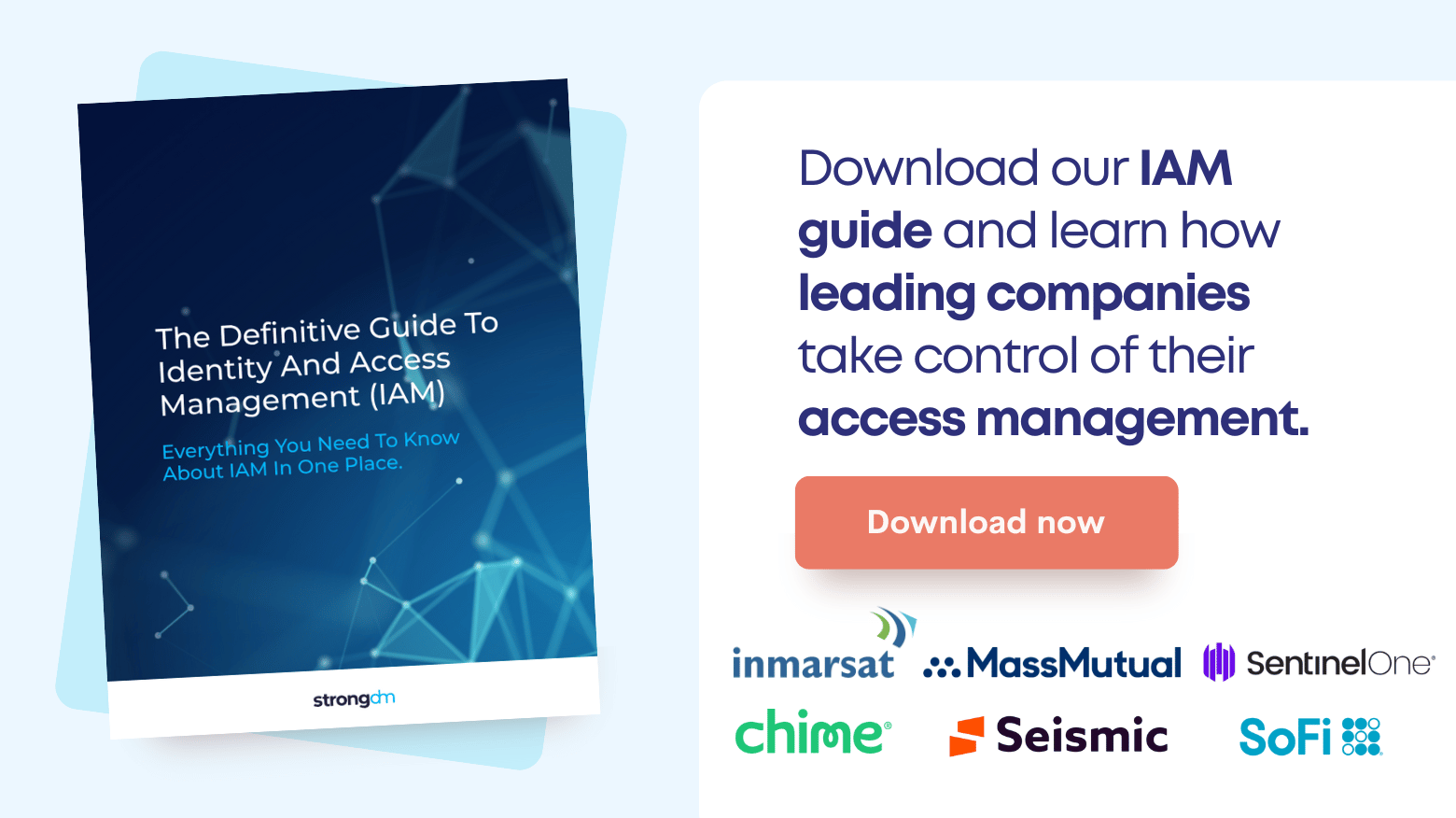As you develop your company’s IAM strategy, here are some key identity and access management concepts you should know:
IdAM - another term for identity and access management, or IAM
Access Management (AM) - defining, assigning, and managing user access permissions to company resources based on roles, attributes, or other context
Digital Identity - a user profile containing verified attributes and credentials used to define permissions, provision/deprovision access, and authenticate a user’s identity
Authentication - the process of verifying that a user requesting access matches the digital identity they claim to be
Authorization - the process of allowing an authenticated user to access a resource
Role-Based Access Control (RBAC) - a method of provisioning or controlling access to resources based on a user’s role in the organization
Attribute-Based Access Control (ABAC) - a method of provisioning or controlling access to resources based on characteristics or attributes assigned to a user, object, action, or environment (e.g., location, device type, etc.)
User Groups - a group of users assigned the same access permissions for a resource based on similar roles or attributes
Active Directory (AD) - a popular on-premises Microsoft directory service that allows administrators to manage permissions for company resources and verify user identities. AD represents an early form of IAM technology
Identity as a Service (IDaaS) - a cloud-based subscription service that provides IAM technology through a third party. IDaaS is an alternative to on-premises solutions like AD
Multi-Factor Authentication (MFA) - a tool used to authenticate a user’s digital identity using two or more authentication factors, such as: knowledge (e.g., security questions), possession (e.g., a one-time password (OTP) delivered to a personal device), physical attribute (e.g., biometric authentication), and time or location patterns that align with a user’s common login habits (e.g., logging on from a certain location during standard work hours)
Biometric Authentication - when a user verifies their identity using a physical attribute like voice recognition, facial recognition, or eye or fingerprint scanning
Single Sign-On (SSO) - a tool used to allow users to log in to multiple IT systems and applications with one set of login credentials
Credentials - a tool for user identification or authentication, like a username and password
Password reset - requesting new credentials when a user has forgotten their current access credentials
Provisioning/Deprovisioning - giving or taking away access to a resource, often during the onboarding or offboarding process
Onboarding/Offboarding - the processes and procedures in provisioning/deprovisioning employee access based on personnel changes
Identity lifecycle management - processes and procedures designed to manage evolving digital user identities and access needs while employed with the company
Zero Trust - a security approach that requires all users to be authenticated and authorized continuously to enforce access control
Privileged Access Management (PAM) - a subset of IAM that defines and controls who or what can make changes to a network, device, or system
Identity Governance and Administration (IGA) - a subset of IAM that manages governance and compliance needs through automation and improved visibility across IT resources




